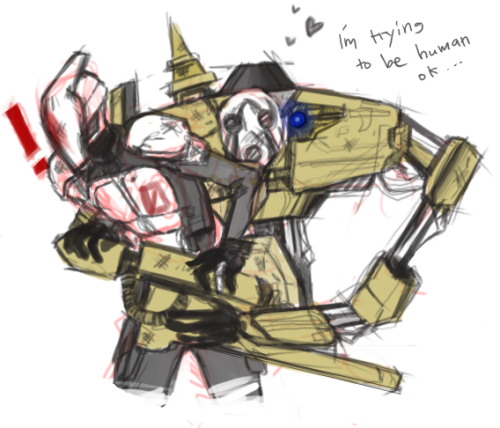
Featured Blog | This community-written post highlights the best of what the game industry has to offer. Read more like it on the Game Developer Blogs.
You CAN Teach an Old Skag New Tricks: An Ode to Borderlands 2
After savoring every last bit of Borderlands 2, my thoughts on it's greatest successes and minor failures are here at last.


There’s more than one way to make an omelet. Sure anything with eggs can be digestible, even quite tasty, but when you add in a little something special, you end up with something really worth eating. I played through all of the original Borderlands game, and it made for a good, solid meal, but there were a lot of things that it didn’t deliver. I reveled in the fact that I could play the entire game couch co-op, each player able to choose unique, albeit undeveloped characters. But couch co-op alone will get me excited about pretty much any game, no matter what it may be lacking, but Borderlands gave me many things I liked: The nifty cell shaded and brightly colored visual style gave a welcome change from good old yellow and blue. It gave me lots of neat guns that I got to kill an interesting, yet limited variety of bad guys with. My favorite part was playing a game with actual characters, which was great! Unfortunately most of them ended up dead by the time we reached the end of their quest chain. The overall dark comedic tone of the game is something right up my alley, but I think they lost sight of the fact that killing off any character we actually got to know and like, isn’t really that funny after a while. I never verbalized my lament of the death of T.K. Baha to the internet world, but after his unsightly murder in the first game I lost most of my faith in Gearbox ever being able to accomplish much more than colorful weapons and disposable characters...but after taking my time to savor the goodness that was Borderlands 2, I must admit that I was wrong.
Borderlands 2 should be a lesson to any game developer who wants to learn how to progress their franchise in a real way. Not only did they improve upon what they already had without fundamentally changing it, they also managed to give new meaning to the experience that players had in the first game. While the first game was a random assortment of missions loosely tied together by a few unmemorable characters, Borderlands 2 gave me a reason to keep playing by implementing a solid storyline that introduced new elements as well as repurposed all of the scattered pieces of the first game. Sure I could talk about all the super cool guns there were, or how the diversity of the enemies added new depth to the gameplay overall, but it’s the careful attention paid to the story and it’s characters that really sets this game apart.
The game begins essentially the same way as the last; we choose our characters (I chose to play as the DLC Mechromancer because I have a huge soft spot for friendly robots and Ed from Cowboy Bebop.) We meet up with Claptrap who is now the only remaining robot of his kind, which makes me sad, but from an overall game design perspective it makes him much dearer to our hearts when a million of his cousins are constantly yelling at us as we try to go about our business. Claptrap is a great example of how Gearbox manages to successfully walk the thin line between comedy and being just plain mean to their characters. The way that death was handled as a means of comedy in the original game was one of my biggest complaints. Sure, lackadaisically finding a dismembered corpse or two can give us a good chuckle when handled correctly, but making this the norm did not make the story better, it just made us not invest in characters because we knew they wouldn’t last. I was so numb to this phenomenon, that when I started playing Borderlands 2 and was given the quest to find Roland, my assumption was that he would obviously be dead. To my pleasant surprise, he was not only alive, but finding him unharmed was only the beginning of Gearbox’s new outlook on the value of life in Pandora.
As we worked our way through the quests, being reunited with the playable characters from the first game was a very rewarding experience. Having an existing connection to them (albeit a pretty superficial one) gave new meaning to the time we had already spent with them in the first game. I played as Lilith in the first game and when she was revealed as the Firehawk was the moment where I first felt a real connection to Borderlands. I had a similar moment when we found Mordecai who my boyfriend played as in the first game, and the feeling of working with old friends made each quest a more worthwhile experience in my eyes.
Other than the huge role of the main characters from the first game, we got to do quests for a variety of other colorful new friends (most of which didn’t end in violent deaths!) Ellie was a personal favorite of mine. I remember seeing her in the trailer and praying that she would be a playable character. I suppose videogame female character equality has not come so far to include an overweight hillbilly woman with super short legs, but I can only hope it won’t be long. Tiny Tina, (although perhaps a bit unintentionally racist) was fun to get to know and a great example of how once again, we walk the line between funny and disturbing. We are able to enjoy the spectacle of Tina getting revenge on her tormentors at a uniquely disturbing tea party.
A few of my other favorite quests were helping out Dukino, the friendly skag, and assisting Mal, the reformed robot to become human. Had these quests existed in the first game, you would have more than likely have had to murder your newfound friends. Being able to grow to love a horrifying gigantic skag is a wonderful thing, and I was so afraid that we were going to have no choice but to put him down but, Spoiler alert: Dukino lives! And even though you end up having to fightyour old buddy Mal, he doesn’t die either. He just thanks you, gives you a joke gun and invites you to battle him anytime. This newfound sensitivity to our relationships to the characters is in my mind, the games biggest improvement in Borderlands 2. They even took such care this time around that they actually corrected some of the mishandled outcomes in the first game, like the departing of my beloved T.K. Baha. The love created between the player and a games characters is a very powerful tool, and something most games lack in a big way. But with great power, comes great responsibility, and I have to say that Gearbox did a pretty bang up job.
One of the saddest moments in the game is obviously, the death of Bloodwing. Now I am one to absolutely hold a grudge when I am unhappy with a character’s death, (I straight up stopped playing Final Fantasy VI after Aeris was killed) so I could have easily been thrown had this not been handled well. The way the scenario plays out creates a huge amount of drama that adds to the game on many levels. We have to fight Bloodwing, but there is a chance we may still be able to save him. This creates high dramatic stakes that are directly tied into the strategy to the battle (something very rare in most videogames.) When we believe that we’ve succeeded in saving our beloved feathered friend, Jack, in all his evil glory, strikes him down in a horrifying way. Although I would have preferred that he lived and frolicking in a field of firemelons for all of eternity, losing Bloodwing hit us where it hurt and made Jack the kind of villain that we really cared about defeating. Let’s face it, Jack is a great villain. The mix of comedy and pure evil is a unique combination that goes a long way in helping make Borderlands 2 something really special. Even for those who haven’t played the original game, the characters are charismatic enough that I feel you could still really enjoy playing only the sequel, but those who have been in it for the long haul get the most bang for their buck, which is the way any good series should be.
Now although I think that this newfound thoughtfulness is beneficial to any and all players with a soul (which by my estimate is about 63% of gamers overall), but I would like to mention that I think that this kind of sensitivity to character/player relationships is one of the most important ingredients in making games like this more enjoyable for female players (in my mind at least.) The drama surrounding the “girlfriend mode” comment aside, I wholeheartedly think that Borderlands 2 is a great game for couples to play together (or any two people really.) Being able to play at different difficulty levels is a great idea, and even beyond that I am a firm believer in couch co-op being the best way to get unfamiliar players into the swing of new gen gaming. Aside from the DLC (which I plan on purchasing soon) my boyfriend and I completed every quest available in the entire game, and that says A LOT about its playability. In our quest to find games to play together we have run into many that didn’t live up to our expectations. Whether they are ridiculously difficult to the point of being un-fun (Kane and Lynch: Dead Men) or don’t let you have an even share of the world you’re playing in, (Fable 2, Fable 3) there is usually a big piece of the puzzle missing. Borderlands 2 is the co-op experience that we’ve been hoping for so I wanted to take my sweet time completing it, which is why my review is a little late to the party. For me, this game was something to be savored, and I can only hope that more designers will look to this formula in the future.
It was hard to say goodbye to such a great game, and I was worried that the ending would not live up to my expectations, and unfortunately I was a bit let down. Endings are tricky, near impossible when it comes to games like this so I won’t let it hinder my overall love for the game, but with so many other things done so right, it was a let down when I didn’t see many drama plot elements tied in with the final confrontation. Now, there are a lot of things this battle did well. There was a lot going on between dodging lava, blasting Crystalisk legs, picking up ammo, and blasting the crap out of the gigantic warrior, which was exciting and all, but I wish they had taken a beat from the Bloodwing or Angel battles and programmed a little more drama into the equation. Why wasn’t the fact that Lilith’s life was at stake tied into the battle mechanics somehow? Why didn’t Brick and Mordecai bust in to help out at the eleventh hour instead of strolling in when it was already over? Granted, the end of the first game was such a big ol’ dud, that this was a big improvement, and I hate criticize a game that did so many things right, but I was a bit let down (Gearbox, don’t worry, I am available to write the ending for Borderlands 3.) Luckily it looks like they’ll be giving it another go (or two or three), which I am happy to hear. If they take the same care in evolving the game as they did with this one, I will put in my pre-order tomorrow.
Read more about:
Featured BlogsAbout the Author(s)
You May Also Like













